
A platformer is a sub-genre of action video games in which the core objective is to move the player character between points in an environment. Platform games are characterized by levels with uneven terrain and suspended platforms of varying height that require jumping and climbing to traverse. Other acrobatic maneuvers may factor into the gameplay, such as swinging from vines or grappling hooks, jumping off walls, gliding through the air, or bouncing from springboards or trampolines.

The Super Game Boy is a peripheral that allows Game Boy cartridges to be played on a Super Nintendo Entertainment System console. Released in June 1994, it retailed for US$59.99 in the United States and £49.99 in the United Kingdom. In South Korea, it is called the Super Mini Comboy and was distributed by Hyundai Electronics. A revised model, the Super Game Boy 2, was released in Japan in January 1998.

Pixel art is a form of digital art drawn with graphical software where images are built using pixels as the only building block. It is widely associated with the low-resolution graphics from 8-bit and 16-bit era computers, arcade machines and video game consoles, in addition to other limited systems such as LED displays and graphing calculators, which have a limited number of pixels and colors available. The art form is still employed to this day by pixel artists and game studios, even though the technological limitations have since been surpassed.
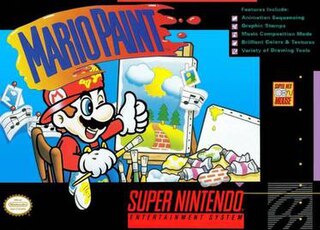
Mario Paint is a 1992 art creation video game developed by Nintendo Research & Development 1 (R&D1) and Intelligent Systems and published by Nintendo for the Super Nintendo Entertainment System. Mario Paint consists of a raster graphics editor, an animation program, a music composer, and a point and click minigame, all of which are designed to be used with the Super NES Mouse peripheral, which the game was packaged and sold with. Per its name, the game is Mario-themed, and features sprites and sound effects that are taken from or in the vein of Super Mario World.
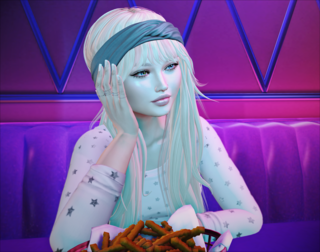
In computing, an avatar is a graphical representation of a user, the user's character, or persona. Avatars can be two-dimensional icons in Internet forums and other online communities, where they are also known as profile pictures, userpics, or formerly picons. Alternatively, an avatar can take the form of a three-dimensional model, as used in online worlds and video games, or an imaginary character with no graphical appearance, as in text-based games or worlds such as MUDs.

Gunstar Heroes is a run and gun video game developed by Treasure and published by Sega. It was Treasure's debut game, originally released for the Sega Genesis in 1993. The game's premise is centered around a pair of characters, the Gunstars, in their efforts to stop an evil empire from recovering four powerful gems. The characters can fire guns and perform a series of acrobatic maneuvers to fight enemies across each stage. There are four weapons in the game which can be combined with one another to create different shot types.

Snake Rattle 'n' Roll is a platform video game developed by Rare. It was published by Nintendo and released for the Nintendo Entertainment System in North America in July 1990 and in Europe on March 27, 1991. The game features two snakes, Rattle and Roll, as they make their way through eleven 3D isometric levels. A Mega Drive version was released by Sega in June 1993 with an extra level. Snake Rattle 'n' Roll was developed by Rare members Tim Stamper and Mark Betteridge. The music was composed by David Wise and was inspired by "Shake, Rattle and Roll" and other 1950s-era songs.

Kirby's Dream Course is a 1994 miniature golf video game developed by HAL Laboratory and Nintendo EAD and published by Nintendo for the Super Nintendo Entertainment System (SNES). A spin-off of the Kirby series and the first released for the SNES, players control the pink spherical character Kirby through a series of courses by launching him towards the goal hole at the end. Kirby can hit enemies to collect power-ups that grant him unique abilities, such as those that allow him to destroy certain obstacles or fly around the level.

Solstice: The Quest for the Staff of Demnos, or simply Solstice, is a 1990 puzzle video game developed by Software Creations. It was published by Nintendo in Europe and CSG Imagesoft in North America for the Nintendo Entertainment System. The game focuses on the wizard Shadax's bid to defeat the evil baron Morbius and rescue Princess Eleanor, whom Morbius plans to sacrifice. Shadax aims to gather the six pieces of the titular Staff of Demnos hidden within the fortress of Kâstleröck. The game's setting is non-linear, and consists of 250 rooms, each with a particular puzzle to solve.
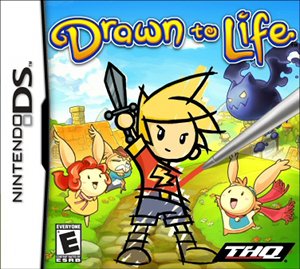
Drawn to Life is an action-adventure platform video game for the Nintendo DS developed by 5th Cell and published by THQ in 2007. It was later published by Agatsuma Entertainment in Japan in 2008 under the name Drawn to Life: God's Marionette, and in Korea under the title Geuryeora, Touch! Naega Mandeuneun Sesang. In the game, the player creates their own playable characters, level objects, and accessories by drawing them using the DS's stylus and touchscreen. The game was ported to iOS by WayForward and released by 505 Games in May 2014.
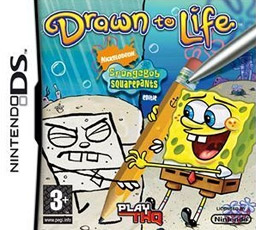
Drawn to Life: SpongeBob SquarePants Edition is a video game for the Nintendo DS. It is a spin-off of 5th Cell's 2007 DS game Drawn to Life, and is based on the Nickelodeon animated comedy series SpongeBob SquarePants, specifically the episode "Frankendoodle". The game was developed by Altron and published by Play THQ, a former subsidiary of THQ. It was released in North America, Australia, Europe, and Japan in 2008.

Jeremiah D Slaczka, also known by his nickname Miah, is an American video game designer/creative director and co-founder of 5th Cell, a video game developer in Bellevue, Washington. He is best known for being the concept creator and Director of Scribblenauts as well as the million-seller hit video game Drawn to Life and 5th Cell's critically acclaimed Lock's Quest, all for the Nintendo DS. Slaczka is credited as the Director, Lead Designer, Story Writer, Original Concept Creator and Art Director for both Drawn to Life and Lock's Quest.
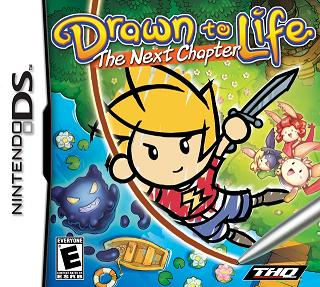
Drawn to Life: The Next Chapter is a 2D platform video game developed by 5th Cell and published by THQ for the Nintendo DS, released in October 2009 in all regions except Japan. It is a sequel to the original Drawn to Life and a counterpart to the Wii version, although it has a different plot. One of the game's major features is the player's ability to draw elements of the game, and the game has a heavy emphasis on doing so.

5th Cell is an independently owned American video game developer founded in 2003 as 5th Cell Media, LLC. led by Jeremiah Slaczka and Marius Falhbusch. The company is most well known for creating the Drawn to Life and Scribblenauts series.

Colors! is a series of digital painting applications for handheld game consoles and mobile devices. Originally created as a homebrew application for Nintendo DS, which was since legitimately distributed on PlayStation Vita, iOS, and Android, the project eventually evolved into an officially licensed application for Nintendo 3DS and Nintendo Switch.

Art Academy, also known as Art Academy: Learn painting and drawing techniques with step-by-step training in the PAL regions and Artistic Taste Classroom DS in Japan, is an art training software for the Nintendo DS. It was developed by Headstrong Games and published by Nintendo. Art Academy was originally a two-part training application only available for download via the DSiWare service since 2009. It was later re-released in 2010 as a fully compiled, retail-able DS Game Card with added features, thus also making it available for original Nintendo DS and Nintendo DS Lite users.

Shantae: Half-Genie Hero, stylized as Shantae: ½ Genie Hero, is a platform video game developed and published by WayForward Technologies. It is the fourth game in the Shantae series, following Shantae and the Pirate's Curse (2014), and the first to be specifically developed for high definition game platforms. The game was released for PlayStation 4, PlayStation Vita, Wii U, Windows, and Xbox One in December 2016, for Nintendo Switch in June 2017, for Amazon Luna in October 2020, for Stadia in February 2021, and for PlayStation 5 in November 2021. Versions for Xbox 360 and PlayStation 3 were initially announced, but cancelled during development.
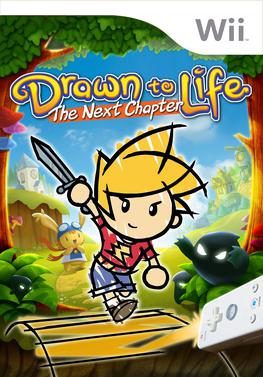
Drawn to Life: The Next Chapter is a platform game developed by Planet Moon Studios and published by THQ for the Wii. Despite having the same title, it has a different plot compared to the DS version.

Next Up Hero is an action dungeon crawl video game developed by New York indie studio Digital Continue and published by Aspyr. It was released for Steam Early Access on January 18, 2018, with a full release on June 28, 2018 alongside the PlayStation 4 and Xbox One versions. It was released for Nintendo Switch on August 16, 2018.

Drawn to Life is an action-adventure puzzle platform video game series originally developed by 5th Cell and published by THQ. Since 2013 all entries in the series have been published by 505 Games.



















